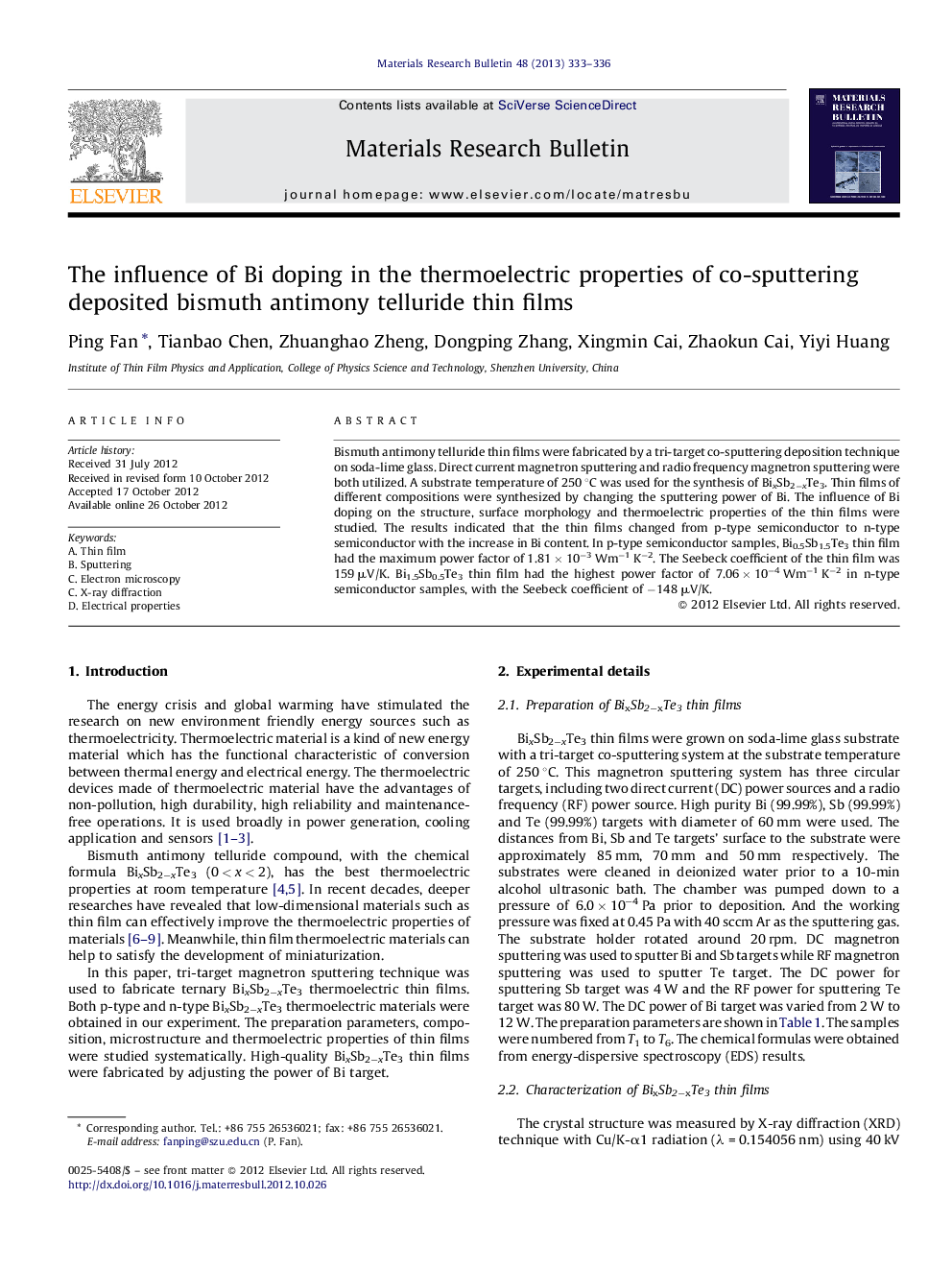| Article ID | Journal | Published Year | Pages | File Type |
|---|---|---|---|---|
| 1489834 | Materials Research Bulletin | 2013 | 4 Pages |
Bismuth antimony telluride thin films were fabricated by a tri-target co-sputtering deposition technique on soda-lime glass. Direct current magnetron sputtering and radio frequency magnetron sputtering were both utilized. A substrate temperature of 250 °C was used for the synthesis of BixSb2−xTe3. Thin films of different compositions were synthesized by changing the sputtering power of Bi. The influence of Bi doping on the structure, surface morphology and thermoelectric properties of the thin films were studied. The results indicated that the thin films changed from p-type semiconductor to n-type semiconductor with the increase in Bi content. In p-type semiconductor samples, Bi0.5Sb1.5Te3 thin film had the maximum power factor of 1.81 × 10−3 Wm−1 K−2. The Seebeck coefficient of the thin film was 159 μV/K. Bi1.5Sb0.5Te3 thin film had the highest power factor of 7.06 × 10−4 Wm−1 K−2 in n-type semiconductor samples, with the Seebeck coefficient of −148 μV/K.
Graphical abstractFigure optionsDownload full-size imageDownload as PowerPoint slideHighlights► Direct current and radio frequency magnetron co-sputtering technique was employed. ► The elemental Bi, Sb and Te targets were used instead of an alloy target. ► The sputtering distance was different to each target. ► Large-scale doping of Bi was investigated. ► P-type and N-type BixSb2−xTe3 thin films were obtained.
